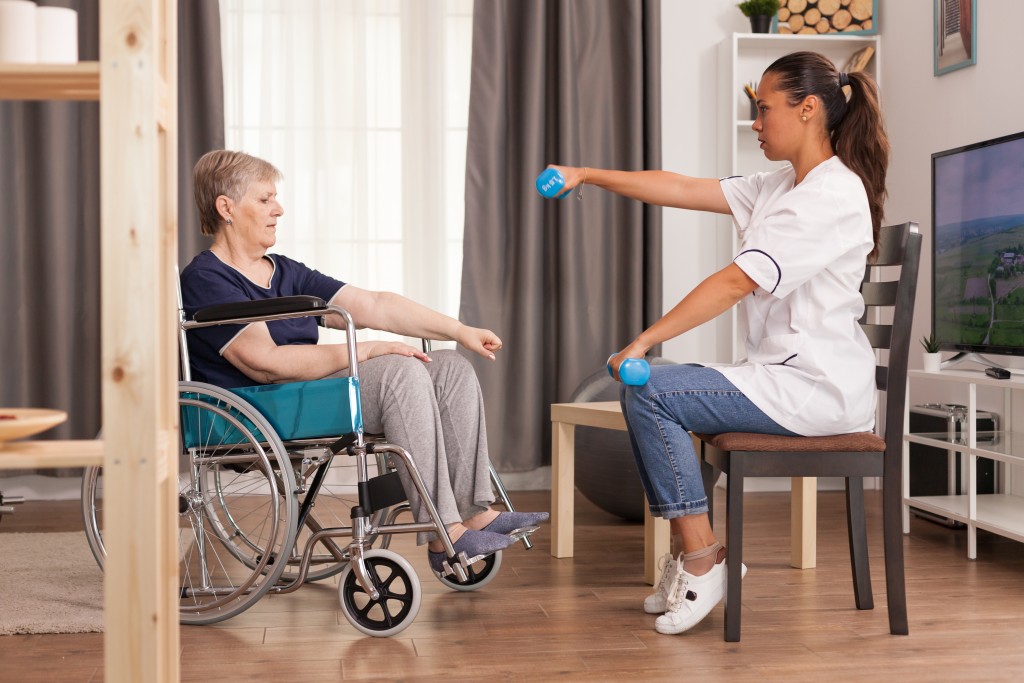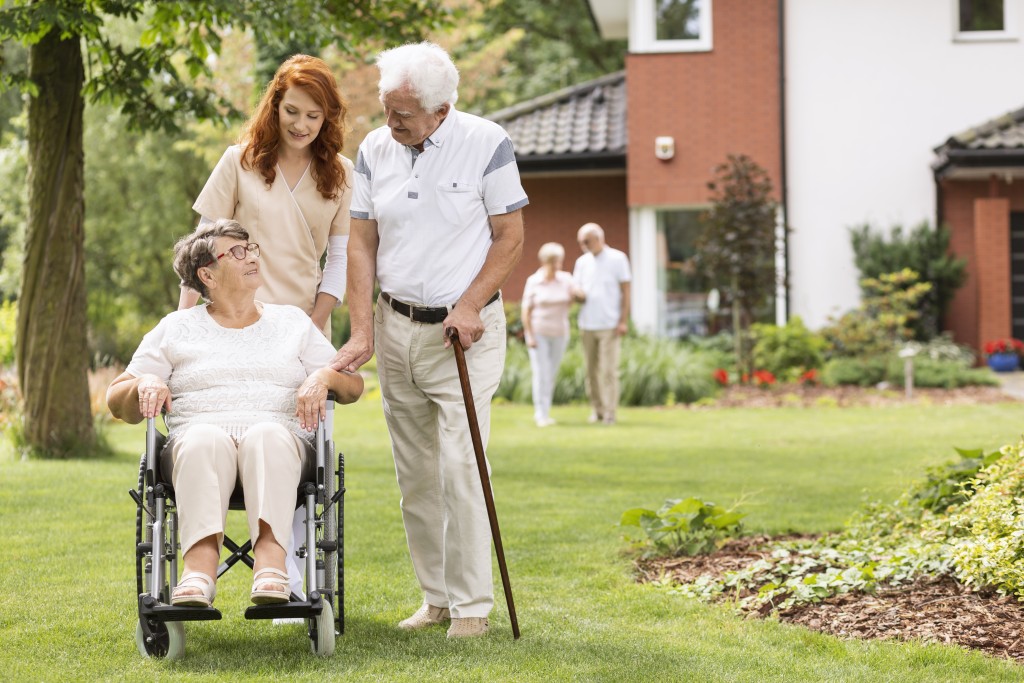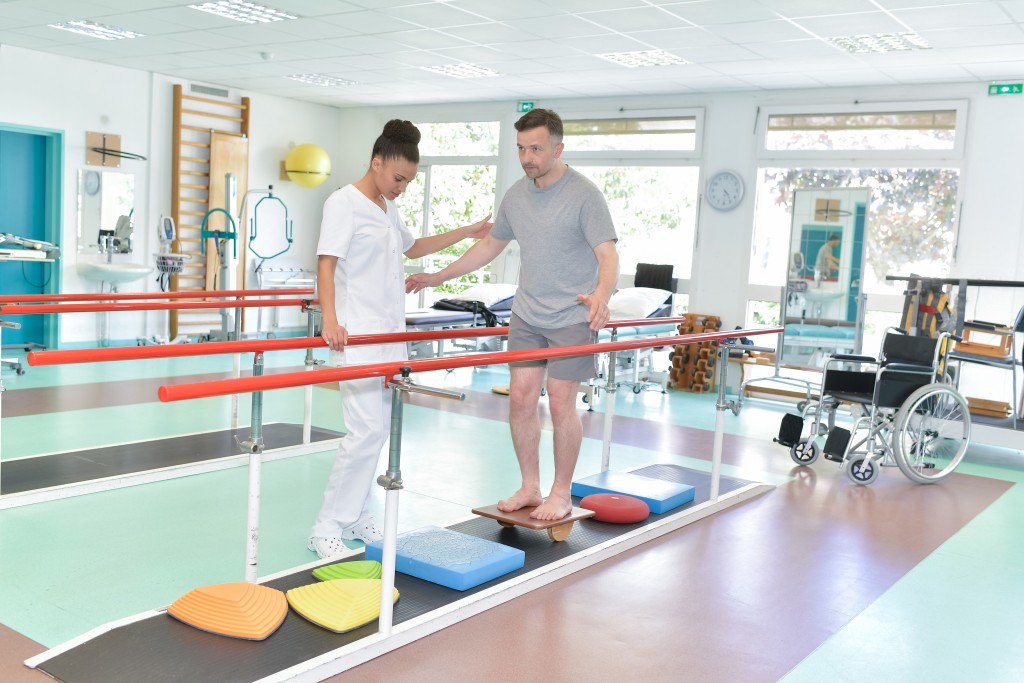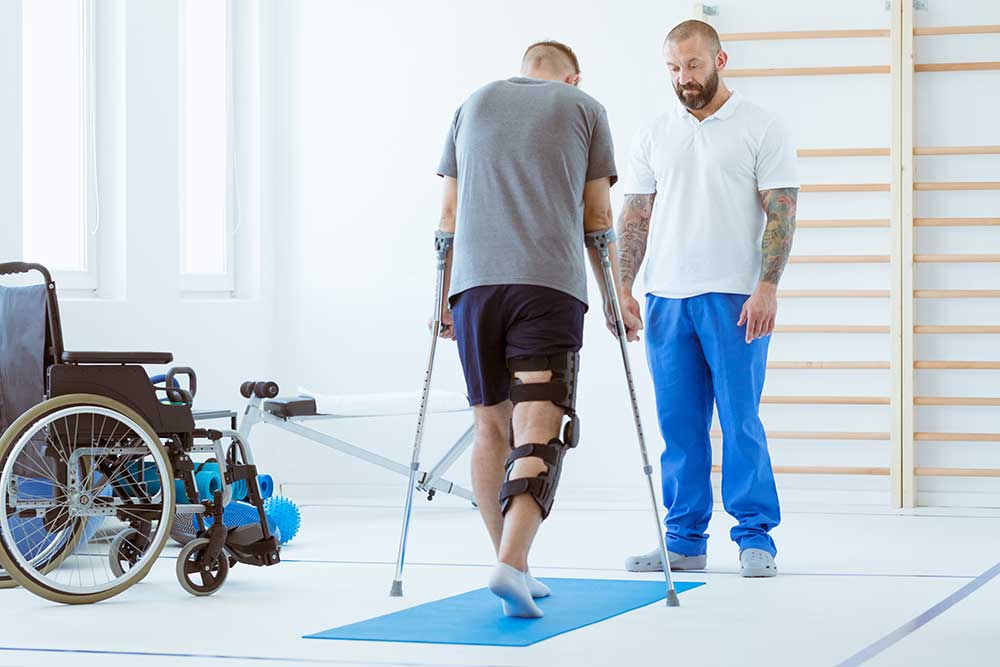If you or a loved one has had a stroke, chances are you’ve seen hemiparesis. Hemiparesis is weakness on one side of the body. It can affect every area of life, from walking to eating to dressing. Recovering and living with one-sided weakness takes a multidisciplinary team, as well as a healthy dose of patience.
What are the symptoms of hemiparesis?
Hemiparesis is seen in 8 out of 10 stroke survivors. If you have it, you may have difficulty walking, standing, and maintaining your balance. You may also have numbness or tingling on your weaker side.
Hemiparesis can sometimes be confused with hemiplegia. Both conditions can occur after a stroke. Hemiplegia, however, is paralysis on one side of the body, making it difficult to move the affected side at all. You may lose bladder control and have trouble speaking, swallowing, and even breathing. Hemiparesis, on the other hand, involves weakness rather than paralysis.

How does a stroke cause hemiparesis?
Most strokes happen when the supply of fresh oxygen is cut off to a portion of the brain, causing brain cells to die. When areas of the brain that are responsible for movement and strength are damaged, it can lead to hemiparesis.
The side of your body weakened by the stroke is determined by the affected part of your brain. For example, if your stroke was on the left side of your brain, you may have muscle weakness on the left side of your body. That’s referred to as ipsilateral, or on the same side as the injury. In some cases, though, the weakness may be contralateral, or on the opposite side of the injury.
How is hemiparesis treated?
It’s possible to treat hemiparesis and regain some strength to the weakened side of your body. Hemiparesis treatment is comprehensive and requires an entire medical team. Your treatment plan will likely include a combination of:
- Physical therapy
- Occupational therapy
- Rehabilitation therapy
- Mental health therapy

Following are some treatments that may help with your recovery.
Modified constraint-induced movement therapy (mCIMT)
In this therapy, your stronger side is slightly restrained, forcing your weaker side to compensate. It can help strengthen those muscles. In one small studyTrusted Source of 30 people, participants recovering from stroke saw improvement in their mobility after 4 weeks of this therapy.
Another studyTrusted Source found that mCIMT led to only minor improvements in people with hemiparesis. More research is needed.
It’s important to work with your medical team on various approaches. Some researchTrusted Source suggests that mCIMT works best when combined with other therapies.

Electrical stimulation
During electrical stimulation, your physical or occupational therapist attaches small electrical pads to your weaker extremities. They send small electrical charges through the pads to make your muscles contract. Over time, this therapy can train your muscles to become stronger again.
Results from a 2012 study indicate that electrical stimulation may help improve gait in people with hemiparesis. Other studiesTrusted Source show improvement in people who received electrical stimulation in addition to kinesiotherapy, a rehabilitation technique that uses exercises to improve strength, endurance, and mobility. Additionally, kinesiotherapy is generally more effective when used with electrical stimulation.
Mental imagery
Your imagination can actually train your brain to succeed. For example, you can imagine yourself winning a race or rocking a presentation to improve your performance. You can do the same to treat hemiparesis. By visualizing yourself using your weaker side, you send nerve messages to your brain that your weaker side is strong again.
A review of studies on mental imagery for hemiparesis found the treatment to be effective for regaining strength in the arms when combined with conventional therapy.
Researchers noted that mental imagery may be less effective for regaining strength and mobility related to gait, however.
More studies are needed, but visualization is a relatively safe treatment that may help when used with more conventional treatments.
Assistive devices
Your doctor may recommend using an assistive device like a cane or walker to help you stay active with hemiparesis.
You can also make your home easier to navigate with some small adjustments. To lower your risk of failing, install:
- grab bars
- ramps
- raised toilet seats

Is it possible to recover from hemiparesis?
It is possible to recover from hemiparesis, but you may not regain your full, prestroke level of strength.
“Full recovery can take weeks, months, or even years, but regular rehabilitation exercises and therapy can help accelerate recovery,” says Dr. Cindy Cooke, president of the American Association of Nurse Practitioners.
To improve your outlook, start rehabilitation as soon possible. Be sure to follow your doctor’s treatment plan and let your medical team know about any changes to your condition. Working towards smaller, short-term goals may help you feel like your treatment is more attainable, too.

Living with hemiparesis
As you work through your treatment, you can make your life easier by making small adjustments throughout your day:
- Stay active to keep your muscles engaged.
- Make changes to your home so it’s easier and safer to manage daily tasks. For example, you can install hand rails, grab bars, and ramps.
- Keep your bathroom safe by placing nonslip pads in the shower and by switching to an electric razor.
- Wear flat shoes.
- Use assistive devices, like a cane or walker, as prescribed.
You may need to learn new ways to do certain tasks. Talk to your doctor about any challenges and let them know about activities you’d like to work toward adding back into your life. Setting your priorities can help you and your medical team develop a treatment plan to maintain or improve your quality of life.
Shared from the Healthline website





Customer Reviews
Thanks for submitting your comment!